|
"In 1907 we [Mason's Churches of God in Christ] had ten congregations, three in Tenn, three in Ark., two in Miss., and two in Okla. Only a small group, the people finding favor in Elder C. H. Mason, appointed him as their overseer or leader, Acts. 2:47, with assistance of Elder R. E. Hart, Elder E. M. Page, Elder J. Brown and others we can say at this writing, we have about one thousand congregations."
- James Courts, The History and Life Work of Elder C. H. Mason and His Co-Laborers, 1919, 98. In late 1907, Howard Goss visited “Charles Mason of the Churches of God in Christ and received a preaching license” which was recognized by the “southern railroads.”[1] Blumhofer went on to find, “Goss recorded in his diary that he had obtained from Mason permission to issue ministerial credentials using the name Churches of God in Christ for the ‘white work’ in Texas.”[2] This is the single piece of evidence that links Mason's Churches of God in Christ and the Churches of God in Christ that Goss and Bell led. Beyond this, the historical record remains silent between 1907-1911. My study's primary focus begins at earliest in 1911, but mainly from 1912 and beyond. From the evidence I have found, by 1911, Goss and Bell were doing their own thing. More work needs to be done for historians to give definitive answers on how much the Mason's and Goss's groups worked together. Regardless if they did, members and ministers today--both the Assemblies of God and the Churches of God in Christ--should worship and work together as a part of the larger body of Christ. In the August 1912 edition of Word and Witness on page 1, Bell had reported on the "annual inter-state convention or encampment of the Churches of God in Christ of the Apostolic Faith." A. E. Wilson of Pine Bluff had called his church the same name (Page 2 gives the abbreviated Churches of God in Christ). [1] Blumhofer, Restoring the Faith, 83. Mason was an important black minister. The only scholarly treatment of Charles Mason’s life and the Churches of God in Christ is Calvin White, The Rise to Respectability: Race, Religion, and the Church of God in Christ (University of Arkansas Press, 2012). https://doi.org/10.2307/j.ctt1ffjg32. White’s study is authoritative and insightful, yet he does not show the cross threads and relationships between Mason and the Assemblies of God. Flower, “History of the Assemblies of God,” 17. See also Donald Pierce Weeks, “A Thesis on the History of the Churches of God in Christ/Bishop Charles Harrison Mason, and Those Who Helped Make the History,” (C. H. Mason file, Flower Pentecostal Heritage Center). [2] Ibid. Admittedly, this study falls short in addressing race relations within the Assemblies of God because of its focus on the issues of credentialing as well as networks of relationships between 1913 and 1916. Given the Assemblies of God being a “lily-white” denomination (as Anderson has called it), it should be understandable, but it is no less disappointing. See Anderson, 190. For the most in-depth look at race relations within the Assemblies of God, see Howard Kenyon, Ethics in the Age of the Spirit: Race, Women, War, and the Assemblies of God (Eugene: Pickwick Publications, 2019). Kenyon also covers the attempts at racial reconciliation within the Assemblies of God. However, he focuses primarily on Azusa Street and the years of the Civil Rights movement, which lays outside the scope of this study.
0 Comments
In October 1918, Brother Seeley D. Kinne wrote an “Open Letter to Elder F. F. Bosworth” in the Pentecostal Herald challenging Bosworth’s rejection of the uniform initial physical evidence of the baptism in the Holy Spirit.[1] Kinne had affiliated with the Churches of God in Christ in 1913 when he was in Bloomington, Illinois. While Kinne did not affiliate with the Assemblies of God, he was a strong part of the Pentecostal Movement.[2] Kinne had received the baptism of the Holy Spirit at Azusa Street in 1907, and he moved to St. Louis, Missouri to share the Pentecostal Message.[3] FOOTNOTE 3 SHARES NEWFOUND EVIDENCE OF KINNE'S IMPORTANCE TO THE ASSEMBLIES OF GOD ORGANIZATION MOVEMENT.
[1] Although the Pentecostal Herald’s editor, Geo. C. Brinkman did not affiliate with the Assemblies of God, the publication’s associate editors—T. K. Leonard and James A. Bell—had affiliated. Seven of the nine contributing editors affiliated (Fred Lohmann, C. W. Pelton, Andrew Urshan, John C. Sinclair, Wm. E. Moody, Mrs. Ettie Reckley, and Hardy Mitchell) while two did not (J. H. Wilson and Andrew Jensen). Twelve of the twenty-one listed field representatives had affiliated with the Assemblies of God as well. See “Masthead,” Pentecostal Herald, October 1918, 2. The Pentecostal Herald was also strongly Trinitarian. [2] Kinne’s letter to Maria Woodworth-Etter was also published in Etter’s Signs and Wonders. See Maria Woodworth-Etter, Signs and Wonders (Indianapolis: M. B. Woodworth-Etter, 1916), 166. [3] Wayne Warner, “The St. Louis Era,” Assemblies of God Heritage 1, no. 1 (Fall 1981): 1-2. In June 28-July 9, 1911, Kinne was a featured “worker” alongside R. E. Erdman of Buffalo, N.Y. and Dr. F. E. Yoakum of Los Angeles, California at a “Pentecostal Campmeeting” at Jordan, Ontario, Canada. IMMEDIATELY AFTER this meeting, S.D. Kinne went to Eureka Springs, Arkansas for the Arkansas State Camp Meeting of the Churches of God in Christ. (Read about this event here.) The Canadian meeting announced “cheap rates in Canada over July 1st, and in the United States over July 4th. Jordan Station is only seventeen miles from Niagara Falls on the Grand Trunk Railroad. For information regarding accommodations, tents, etc., write Pastor George A. Chambers, Vineland, Ontario.” See “Campmeetings,” Latter Rain Evangel, May 1911, 12. Chambers had affiliated with the Assemblies of God in 1914 but was not listed on the ministerial rolls after 1914. Erdman ministered alongside A. A. Boddy, Bro. R. Greer, and A. L. Fraser at Foxchase in July 1914 as previously discussed. See Confidence, August 1914, 146. On December 7, 1913, R. E. Erdman had ordained Ellsworth S. Thomas of Binghamton, New York, who was the first ordained African American minister in the Assemblies of God. See Minutes, 1915, 16 and “Ministerial File: Ellsworth S. Thomas,” Flower Pentecostal Heritage Center. Robert Brown of Glad Tidings endorsed Ellsworth’s application. Brown, Boddy, Erdman, Kinne and Yoakum’s relationship was significant in this important moment in Assemblies of God history. In March 1914, the Word and Witness wrote, “Everybody, all aboard for the Hot Springs convention. This is the final call for objects as previously specified in Word and Witness. Meeting to be in old Grand Opera house, 200 central avenue.”[1] The announcement featured the names of thirty-three early Pentecostal leaders within the Churches of God in Christ as well as the Christian and Missionary Alliance as has been the focus of this study. The first name on the list was “R. E. Edman, Buffalo, N.Y.”[2] Erdman’s name was misspelled by the Word and Witness and while he did not affiliate with the Assemblies of God, he shared many important connections with other ministers who did. Erdman wrote, Dear Bro. Bell, grace unto you and peace be multiplied. I am wholly in sympathy with the call for the convention in April at Hot Springs, Ark. And the Lord willing, I shall be with you. I am doing what I can to get the brethren from the North to come. There is great need of such a gathering, and I am truly glad that you are having this one.[3] Of the thirty-three ministers, four never affiliated with the Assemblies of God including Erdman, J. W. Pitcher of Baltimore, Maryland, Chas. B. Bowman of Chicago, Illinois, and H. N. Thurman of Egypt. Twenty-two of the ministers were a part of the Churches of God in Christ including E. N. Bell, E. G. Birdsall, F. F. Bosworth, Harry Bowley, A. P. Collins, J. A. Corbell, A. B. Cox, E. F. Cunningham, O. W. Edwards, E. R. Fitzgerald, C. E. Foster, W. T. Gaston, Howard Goss, Walter W. Hall, S. D. Kinne, B. F. Lawrence, Fred Lohmann, M. M. Pinson, W. H. Pope, W. R. Potter, H. G. Rodgers, and Gilbert Sweaza. The vast majority of these ministers had been a significant part of Maria Woodworth’s Etters revivals. Only fourteen of these ministers remained affiliated with the Assemblies of God through the 1916 schism. Fifteen of the twenty-two ministers from the Churches of God in Christ left the Assemblies of God. [1] General Convention of Pentecostal Saints and Churches of God in Christ,” Word and Witness, March 20, 1914. 1. [2] Ibid. [3] R. E. Erdman, “Coming from the North,” Word and Witness, March 1914, 1.
It's exciting to find information that few have read since it was first printed!
This is the 1912 Eureka Springs Camp Meeting that is often cited as the original impetus for the formation of the Churches of God in Christ movement led by E. N. Bell. There's more information though in Berryville's Star Progress concerning the 1911 Eureka Springs Camp Meeting that I have talked about before! Article from Aug 4, 1911 The Star Progress (Berryville, Arkansas)
Most likely the estimated attendance the article refers to is the total across the several services of the camp meeting. I previously talked about this meeting in a previous post. Here's the full article from "Camp Meeting a Success,” Eureka Springs Times, July 28, 1911, 5, Courtesy of the Arkansas State Archives.
I believe I have discovered a new attendee to the 1912 Eureka Springs Camp Meeting as well. E. N. Bell posted frequent advertisements and listings for R. E. Winsett. Winsett later affiliated with the Church of God (Tennessee), but he was in attendance at the 1912 Eureka Springs Churches of God in Christ meeting. In 1911, Winsett had written Songs of the Kingdom: The Camp Meeting Special.

Sometimes it is difficult to put together the pieces of information in the historical record. On December 20, 1913, five early Pentecostal voices—M. M. Pinson of Phoenix, Arizona; A. P. Collins of Ft. Worth, Texas; H. A. Goss of Hot Springs, Arkansas; D. C. O. Opperman of Houston, Texas; and E. N. Bell of Malvern, Arkansas—invited “laymen and preachers” and “all elders, pastors, ministers, evangelists and missionaries” to come to a Convention at Hot Springs in April 1914.[1] They encouraged “all the churches of God in Christ” and “all Pentecostal or Apostolic faith assemblies,” regardless of official name, to come together “in love and peace to push the interests of the Kingdom of God.”[2] [1] E. N. Bell, “General Convention of Pentecostal Saints and Churches of God in Christ,” Word and Witness, December 20, 1913, 1. [2] Ibid. Naming conventions in local, non-religious periodicals favored calling Pentecostal people terms like "Apostolic faith" or "holy rollers." Searching local newspapers in Chronicling America with search terms like this and then looking for associated names will render more successful searches and help piece together the historical record. W. E. Wilson, for instance, listed in the article above article is very close to A. E. Wilson of Pine Bluff in the December 1913 list of ministers in the Word and Witness. Is this the same person? At first glance, it seems possible, but further investigation reveals that in 1912, A. E. Wilson was out of Little Rock. We get this from looking at the hotel record from June 19, 1912 on page 5 in the Pine Bluff Daily Graphic. Cast a Wider Net
"The annual interstate convention or encampment of the Churches of God in Christ of the Apostolic Faith people met on schedule time at Eureka Springs, Arkansas, July 10, and closed with joy on July 21.” Over “500 [people] were in attendance” at a meeting that birthed the Churches of God in Christ, and “the attendance far surpassed that of one year ago at the same place." “Glory and Unity at the Eureka Springs Camp,” Word and Witness, August 20, 1912, 1-2. Click on the pictures below to access the Chronicling America Newspaper Link from the Green Forest Tribune from July 19, and July 26, 1912. From "Varner and Vicinity" on the right from July 26, 1912: "The people of this community, who have been attending the camp meeting in Eureka Springs, have returned. They report a nice time." Immediately above this announcement it records, "A fine boy took up his abode at the home of Mr. and Mrs. Daniel Lynn Monday." Lynn was a minister with the Churches of God in Christ since at least 1913, and he affiliated with the Assemblies of God through 1915. He did not stay affiliated in 1916. On July 19, 1912, it records above the announcement: "John Winkle is drilling a well for Daniel Lynn." On May 10, 1912, the Green Forest Tribune reported that "Daniel Lynn preached at Denver Sunday." This is Denver, Arkansas. Not Denver, Colorado. Here's a short history of Denver, Arkansas. The November 11, 1910 Green Forest Tribune, on Page 2 reported that "Rev. Jones of the Apostolic faith is conducting a successful meeting at Varner. Some people from Denver are attending." More likely than not, J.S. Jones of Notch, Missouri ministered there. Notch is just west of Branson, Missouri, and very close to Varner. Jones affiliated with the Assemblies of God from April 1914 through 1915. Below you will see previously unobserved attendees of the 1912 Eureka Springs Meeting: J. S. Plott and George Riddle. The 1912 Meeting of the Churches of God in Christ was also attended by people in the community of Varner. There does not appear to be another significant meeting in Eureka Springs aside from the Churches of God in Christ/Apostolic Faith Camp Meeting during this week in 1912, and there are additional connections between Plott and Daniel Lynn listed below. J. S. PlottIn the early 1900s, people's names were frequently shortened in the manner you see above for J. S. Plott. To find who this J. S. Plott was required a great amount of effort. Which J. S. Plott lived near Green Forest in 1912? How can we be for sure that the people below are the correct people? I searched "J. S. Plott grave Carroll County." Click here for the website google took me to. With this information, I was able to search for J. S. Plott and R. E. Plott, which led me to the links below. Sadly, J. S. Plott and his wife, R. E., lost an infant child when they lived near Denver, Arkansas. I am waiting for information/pictures from the family of J. S. Plott. Hopefully, with this information, we can find both Plott and Riddle within the 1912 Eureka Springs Tri-State Camp Meeting Photo. Rosa's Father William M. Boyd is different from the Will Boyd mentioned below, but more work needs to be done. EVIDENCE THAT J.S. PLOTT DID ATTEND 1912 CAMP MEETING IN EUREKA SPRINGS. John S. Plott attended a meeting alongside Rev. Daniel Lynn as recorded on February 21, 1913, in The Green Forest Tribune on Page 2: "Rev. Daniel Lynn has gone to Cedar Valley to attend meeting. He was accompanied by John Plott of Denver." Again, Lynn had affiliated with the Churches of God in Christ. Lynn reported to Word and Witness in the June 20, 1913 article under the title "'GREEN FOREST, ARK.' God is still blessing at Varner. Bro. W. T. Gaston has been with us a few days and has given us some helpful lessons along the line that God is working in this place.--Daniel Lynn." George RiddleThe case of George Riddle was not nearly as difficult. Riddle married Miss Lucy Etchison as shown below. 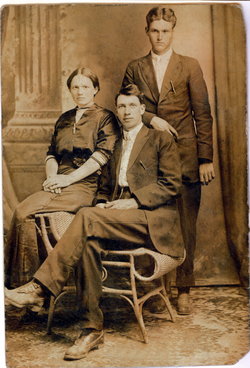 George Riley Riddle • Lucy E Etchison • James Perry Etchison Standing George Riddle's father was William Henry Harrison Riddle. Riddle's story was included in Turnbo's Fireside stories of the early days in the Ozarks. Links with Churches of God in Christ Kelly Campbell potentially reinforce the Boyd family connection. Nettie McCollister and Will Boyd were married by Kelly Campbell. Campbell was present for the 1911 Eureka Springs Meeting. Click here for more information. Nettie Luella McCollister BoydThe Boyds, Campbells, and other relations were dense family groups. More work is needed to unravel the numerous family ties. But it's clear that the Churches of God in Christ ministers had very strong connections through this short article. Jackson Vanover affiliated with the Assemblies of God from 1914-1915. CategoriesIf you have any information to help solve this historical inquiry, please let us know! This is taken from the following page of the Flower Pentecostal Heritage Center Website: Questions Concerning the Relationship between Bishop Charles H. Mason and the Church of God in Christ (white):Informal links between the Church of God in Christ (white) and Bishop Mason's organization did exist, and their leaders and members often crossed the color line to worship together. However, historians have been unable to locate documentation to show whether a formal connection existed between the two organizations that went by the name Church of God in Christ. The Church of God in Christ (white) issued its own credentials, elected its own officers, published its own newspaper (Word and Witness), and had its own system of short-term Bible training centers for ministers. Despite having similar names, the two groups organizationally seemed to have little, if anything, in common.
Discovery of the following two kinds of information might prove most helpful in discovering whether the two groups were organizationally related. 1. Railroad Clergy Bureau records, which might provide documentation whether Church of God in Christ (white) ministers claimed railway clergy discounts based on affiliation with Mason's group. 2. Evidence demonstrating organizational connections between ministers of the Church of God in Christ (white) and Mason predating the April 1914 formation of the Assemblies of God. It is possible that researchers - particularly those with significant knowledge of Church of God in Christ history - might be able to identify some Church of God in Christ (white) ministers on the ministerial rosters as having been associated with Bishop Mason. It should be noted that Mason's church did have white branches, such as those led by Memphis minister L. P. Adams and by William B. Holt. Many of these ministers and churches ultimately left Mason's organization, and some joined the Assemblies of God. However, these white branches apparently were formed after 1914 and had nothing to do with the formation of the Assemblies of God. By 1917, according to David Daniels' article in Portraits of a Generation (University of Arkansas Press, 2002), Adams appeared on Mason's roster of overseers for his organization. Please help solve this mystery! For more information, see: Darrin Rodgers, "The Assemblies of God and the Long Journey toward Racial Reconciliation," Assemblies of God Heritage 28 (2008): 54-58. If you possess any materials concerning the Church of God in Christ (white), please contact the Flower Pentecostal Heritage Center at [email protected]. "The annual interstate convention or encampment of the Churches of God in Christ of the Apostolic Faith people met on schedule time at Eureka Springs, Arkansas, July 10, and closed with joy on July 21.” Over “500 [people] were in attendance” at a meeting that birthed the Churches of God in Christ, and “the attendance far surpassed that of one year ago at the same place." “Glory and Unity at the Eureka Springs Camp,” Word and Witness, August 20, 1912, 1-2. Description: Tri-State Camp Meeting at Eureka Springs, Arkansas, July 25, 1912; large group photo taken in a natural amphitheater. Some identified.
First row: Myrtle Corbell (1st row, left, about 5 to left of baby carriage; she is holding a little girl with a bow in her hair & there is a young boy standing in front of her); Miss ___ Wooten (front row, center, in white dress, holding a Bible); Bill Hall (front row, right; 2 to right of Miss Wooten; he is holding his son, Naaman Hall); Ellen Hall (front row, right of Bill Hall; holding her son, Billy Hall); Second row: S. N. Hall (2nd row, left, just above lady with a baby carriage he has a dark suit and is holding a child); Miss Hughes (later Mrs. S. N. Hall) (2nd row, to right of S. N. Hall; she is also holding a child); Mrs. Blanche Giles (2nd row, center, holding a Bible, just above Miss Wooten); William E. Giles (2nd row, right of wife; holding baby Pauline Giles); Alpha E. Humbard (2nd row, right of William Giles); George Lee Hall (2nd row, right of A. E. Humbard); John H. James (2nd row, right of George Lee Hall); Third row: Hardy Mitchell (far left, between 2nd & 3rd row, wearing a white shirt); Efton Wiley (3rd row, 7 from far left, wearing a white shirt); Jo Ellen Wiley (child, 3rd row, right of Efton Wiley); Philip Wiley (child; 3rd row, right of Jo Ellen Wiley); Opal Wiley (3rd row, right of Philip Wiley); Willard Pope (3rd row, very center); Mr. _____ Wood (white-headed man with beard in 3rd row, to the right of Willard Pope); Ida Collins (3rd row, 6th from far right); A. P. Collins (3rd row, right of his wife); I. N. Watson (3rd row, 2 from far right); Fourth row: 'Mother' Mary Arthur (4th row, very far left; holding out a Bible); Fifth row: Fred Wilson (5th row, 3rd from far right); Sixth row: J. W. Welch (top row, 3 to right of tall man in center); W. T. Gaston (top row, 2 to right of J. W. Welch); J. A. Corbell (top row, 6 to right of W. T. Gaston). E. N. Bell, D. C. O. Opperman, Howard Goss, M. M. Pinson, and Frank Anderson, although present for the meeting, do not appear to be pictured in this large group photograph. |
AuthorHi! I am Kent. I love history and church history. While this website is especially dedicated to Assemblies of God history, I publish a lot of church history on this blog! Archives
March 2024
Categories
All
|
The Christian Evangel was published by J. Roswell Flower, an early leader of the Assemblies of God.
In 1914, after the Assemblies of God was founded in Hot Springs, Arkansas, E. N. Bell joined J. R. Flower in publishing it.
The Christian Evangel along with the Word and Witness were the official mouthpieces of the Assemblies of God in its formative years.
In 1916, the Word and Witness was discontinued, and the Christian Evangel became the Assemblies of God's sole weekly piece.
In 1919, the Christian Evangel was renamed the Pentecostal Evangel.
The purpose of this site is to reclaim some of the lost legacy of the Christian Evangel and tell some of the untold stories of the Assemblies of God.
In 1914, after the Assemblies of God was founded in Hot Springs, Arkansas, E. N. Bell joined J. R. Flower in publishing it.
The Christian Evangel along with the Word and Witness were the official mouthpieces of the Assemblies of God in its formative years.
In 1916, the Word and Witness was discontinued, and the Christian Evangel became the Assemblies of God's sole weekly piece.
In 1919, the Christian Evangel was renamed the Pentecostal Evangel.
The purpose of this site is to reclaim some of the lost legacy of the Christian Evangel and tell some of the untold stories of the Assemblies of God.
A podcast of this history project is coming in Summer 2024!




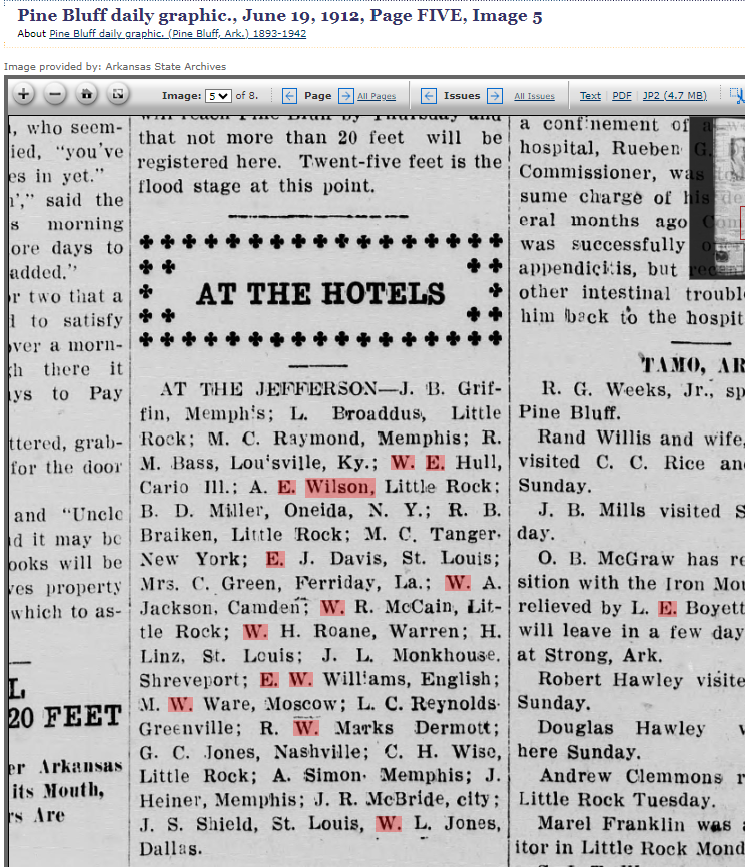






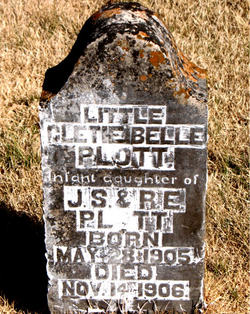

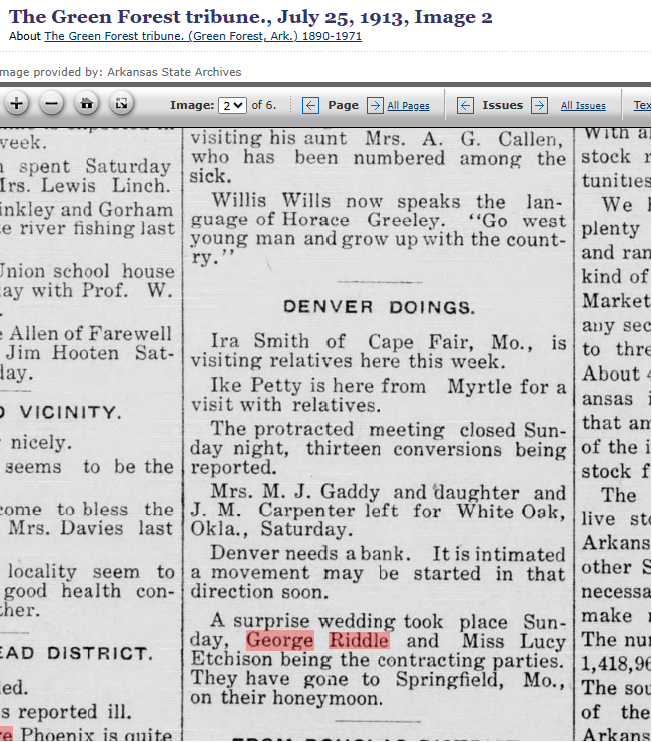

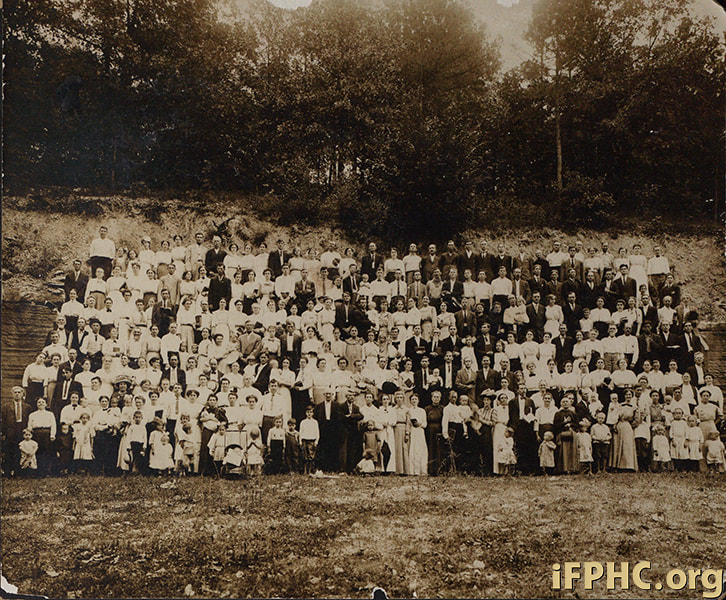
 RSS Feed
RSS Feed


